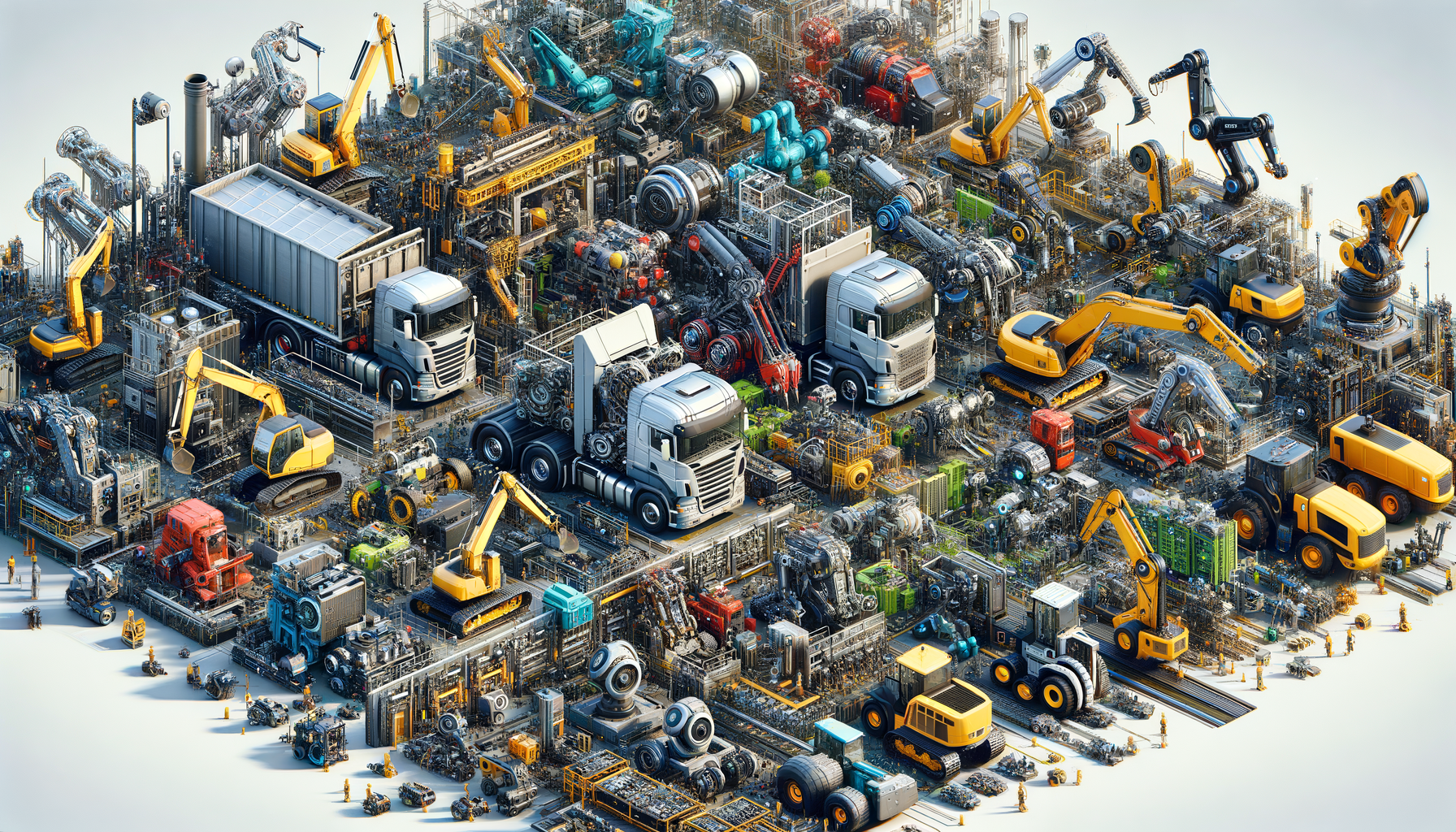The Evolution of Industrial Machines
Industrial machines have undergone significant transformations since the dawn of the Industrial Revolution. Initially, these machines were powered by steam and manual labor, but technological advancements have propelled them into the era of automation and digitalization. Today, industrial machines are equipped with sophisticated sensors and software that enable them to perform complex tasks with precision and efficiency. The integration of technologies such as artificial intelligence and the Internet of Things (IoT) has further enhanced their capabilities, making them indispensable in modern manufacturing and production processes.
One of the key drivers of this evolution is the need for increased productivity and efficiency. As global demand for goods continues to rise, industries are under pressure to produce more while maintaining quality and reducing costs. Industrial machines, with their ability to operate continuously and with minimal human intervention, have become vital in meeting these demands.
Moreover, the evolution of industrial machines is closely linked to advancements in materials science. The development of stronger and lighter materials has enabled the creation of machines that are not only more durable but also more energy-efficient. This has significant implications for industries looking to reduce their carbon footprint and adhere to environmental regulations.
Types of Industrial Machines
Industrial machines come in a variety of forms, each designed to perform specific tasks. Some of the most common types include:
- Machining Tools: These machines are used to shape and cut materials into desired forms. Examples include lathes, milling machines, and grinders.
- Material Handling Equipment: This category includes machines like conveyors, forklifts, and cranes, which are used to move materials within a facility.
- Packaging Machines: These machines automate the process of packing products for distribution, ensuring consistency and efficiency.
- Printing Machines: Used in industries such as publishing and textiles, these machines print designs or text onto various surfaces.
Each type of machine plays a crucial role in the production process, contributing to the overall efficiency and productivity of the industry. The choice of machine depends on factors such as the nature of the task, the material being processed, and the scale of production.
Automation and Its Impact on Industrial Machines
Automation has revolutionized the way industrial machines operate, bringing about a new era of efficiency and precision. With the advent of programmable logic controllers (PLCs) and robotics, machines can now perform repetitive tasks with minimal human intervention. This not only reduces labor costs but also minimizes the risk of human error, leading to improved product quality.
The impact of automation is particularly evident in industries such as automotive manufacturing, where robots are used for tasks ranging from welding to assembly. These machines work tirelessly, ensuring that production lines run smoothly and efficiently. Furthermore, automation allows for greater flexibility in production, enabling manufacturers to quickly adapt to changes in demand or product specifications.
However, the rise of automation also presents challenges, particularly in terms of workforce displacement. As machines take over tasks traditionally performed by humans, there is a growing need for workers to acquire new skills to remain relevant in the job market. This has led to a greater emphasis on education and training programs aimed at equipping workers with the skills needed to work alongside advanced machinery.
Safety and Maintenance of Industrial Machines
Ensuring the safety and reliability of industrial machines is of paramount importance. Regular maintenance is essential to prevent breakdowns and extend the lifespan of machinery. This involves routine inspections, lubrication of moving parts, and the replacement of worn-out components.
In addition to maintenance, safety measures must be implemented to protect workers from potential hazards. This includes the installation of safety guards, emergency stop buttons, and the provision of personal protective equipment (PPE). Training programs are also crucial in educating workers about safe operating procedures and emergency response protocols.
Advancements in technology have also contributed to improved safety standards. For instance, the use of sensors and monitoring systems allows for real-time tracking of machine performance, enabling the early detection of potential issues. This proactive approach not only enhances safety but also reduces downtime, ensuring that production processes remain efficient and uninterrupted.
The Future of Industrial Machines
The future of industrial machines is poised to be shaped by continued technological advancements. Innovations such as artificial intelligence, machine learning, and IoT are expected to further enhance the capabilities of these machines, making them smarter and more autonomous.
For instance, AI-powered machines can analyze vast amounts of data to optimize production processes, predict maintenance needs, and improve product quality. Similarly, IoT connectivity allows machines to communicate with each other and with central control systems, enabling seamless coordination and integration across the production line.
Moreover, the push for sustainability is likely to drive the development of more energy-efficient machines. As industries strive to reduce their environmental impact, there will be an increased focus on machines that consume less energy and produce fewer emissions.
Overall, the future of industrial machines promises to be exciting, with the potential to transform industries and redefine the way we produce goods. As these technologies continue to evolve, they will undoubtedly play a crucial role in shaping the future of manufacturing and production.




Leave a Reply